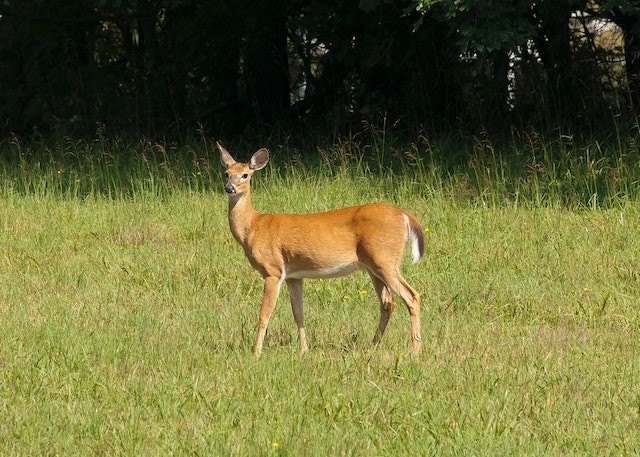
Bizarre Predator Caught in the Act Devouring a Deer in New York; What Was It?
A mysterious predator was caught on camera devouring a dead deer in New York State. Many wondered what the animal was as they couldn't readily identify it from the video.
Mysterious Animal Attacks a Deer
A bizarre predator feasted on the carcass of its fallen prey - a dear. The incident happened in Wilmington, New York. The New York State Department of Environmental Conservation was called to investigate the matter, Newsweek reported.
The DEC wildlife biologists who responded to the scene set up a trail camera overlooking the remains of the deer in hopes that the culprit would return. It indeed returned, and they captured it on video.
DEC gave an update on Facebook. According to the department, they received an eye-witness description of the event and the predator.
The deer was reportedly female, between 80 to 100 pounds. According to DEC, there aren't many predators in the Adirondacks big enough to take down prey that size.
They also noticed that the deer's right front shoulder and rump were fed upon. It also sustained damage in the lower part of its neck, right behind the jaw.
The predator also tried to cover the carcass but left scrape marks from its paws around the prey's head.
Netizens had various speculations about the animal, with some saying it was a cougar or mountain lion. Another said it was a lynx; several suggested it was a bobcat.
NYS DEC eventually gave in and confirmed that the mysterious predator was a bobcat. Many said that they knew it was a bobcat after seeing its tail. A different user said that its ears and bobbed tail gave it away.
ALSO READ: Rare Bigfin Squid Spotted in Lost City Hydrothermal Vent Field [Watch]
What's a Bobcat?
Bobcats have stout bodies. They are medium-sized felines with a short, "bobbed" tail about six inches long. They are easily recognizable through their cheek ruffs and tufts of black hair on their pointed ears.
Their side and back are generally of the same color with faint black spots, which tend to be grayer in winter and tan in summer, according to Wildlife in Connecticut.
Their tail may have one to several dark bands and a shade of black on top and whitish below.
Typically, adult males weigh between 18 and 35 pounds and measure 32 to 37 inches in length. Meanwhile, the females weigh between 15 and 30 pounds and measure 28 to 32 inches in length.
Bobcat is three times bigger than their distant relative, the domestic cats. However, they are smaller than cougars.
Mountain lions are 7-9 feet, while bobcats are 3 feet long. The former weighs 90 to 160 pounds, while the latter only weighs 20 to 30 pounds, according to the Iowa Department of Natural Resources.
Young bobcats are often confused with house cats when they roam around. However, adult house cats' tracks are much smaller than adult bobcats'.
Bobcat tracks have a round appearance with four round toe pads in front and rear prints. They have a fifth toe on the forefoot, but it doesn't leave an impression because it is raised high on the foot.
Bobcats prefer forests, but they also thrive in areas with thick understory. They are territorial, and their home ranges from eight to 20 square miles.
As for their diet, they typically consume cottontail rabbits, woodchucks, squirrels, chipmunks, mice, voles, snowshoe hares, white-tailed deer, and birds. Sometimes, they prey on insects and reptiles. The deer they take down are likely sick, injured, young, or very old.
RELATED ARTICLE: Record-Breaking Giant Squid Caught in Hawaii, Fisherman Says It Can Make About 100 Plates of Calamari
Check out more news and information on Animals in Science Times.














